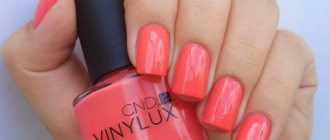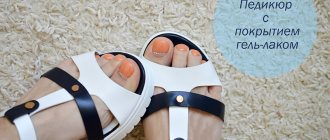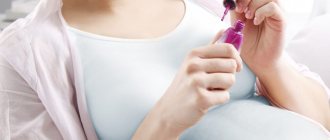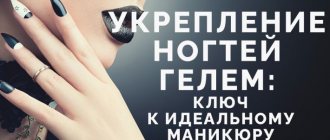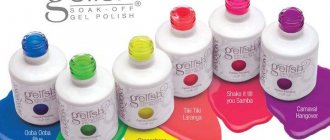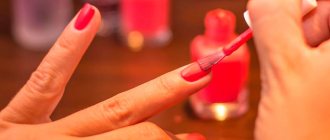Pedicures are a safe and healthy way for a woman to feel beautiful during pregnancy.
Tools used during nail treatments should be sterilized before use to prevent infection and inflammation after a pedicure.
If you are worried about whether pregnant women can get a pedicure, play it safe and bring your own tools to the beauty salon.
When choosing a salon, consider the following points:
- There should be good ventilation to quickly remove odors and fumes associated with acrylic nails and nail polish.
- If the salon offers hair treatments, the smoke from perms and other styling processes can cause headaches and nausea in pregnant women.
- Some cheap nail care products use toluene or formaldehyde. These substances are not considered safe for use during pregnancy and should be avoided whenever possible. If the manicurist does not know whether these ingredients are included in the products she is working with, it is better to choose another manicurist.
Can pregnant women get a pedicure? It is possible and even necessary.
- As the belly gets bigger, a pregnant woman can no longer do a beautiful pedicure at home on her own. She will need help trimming her toenails properly and massaging her feet. And an attractive appearance increases self-esteem and allows the expectant mother to feel calm and confident.
- In addition to a basic pedicure, pregnant women can receive foot baths. This will provide relief to those who experience swollen feet during pregnancy.
A pedicure can do wonders in soothing sore feet, increasing circulation and reducing swelling, not to mention making you feel much more beautiful. Just ask your specialist not to massage the area between your ankle and heel (this can cause contractions) in the last trimester of pregnancy.
Manicure and pedicure

Manicure is a procedure that consists of various stages: working with the shape of the nails, removing the cuticle, and applying varnish. Manicure varies by type:
- Classic (edged). It is considered the most common option. It is also often made at home. Hands are placed in a warm bath, and then the cuticle and hangnails are removed.
- European. The cuticle is lubricated with a special product. Then it is moved aside and removed.
- Hardware. In this case, a grinding machine is used.
Reference! It is not prohibited for a pregnant girl to do a manicure, but it is best to use the classic method.
Pedicure is a safe procedure, so it can be performed during pregnancy. But it is not recommended to do paraffin therapy, because this procedure has contraindications. You also need to be careful with the products you use.
Is it possible to do a coating?
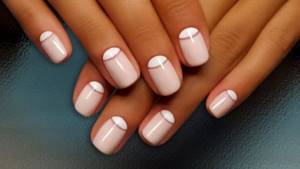
The gel polish contains unsafe components. They negatively affect the female body and the development of the fetus. Components that can have a negative effect on the body:
- Formaldehyde. It has an unpleasant smell. Causes headaches and various allergic reactions.
- Camphor. Increases uterine tone and can also affect the functioning of the cardiovascular system.
- Toluene. Necessary for quick drying of the varnish. This is a strong solvent. If it enters a woman’s body, it can adversely affect the child.
- Butylated hydroxyanisole. It also has a negative effect on the body of a pregnant woman.
If the gel polish contains one of the components, then it is recommended to avoid manicure.
Pedicure during pregnancy: avoiding possible risks
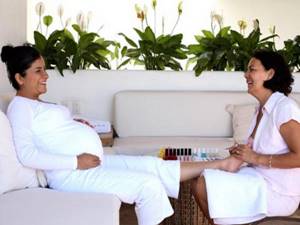
However, manicures and pedicures during pregnancy are among the activities that you shouldn’t be afraid of. Some people believe that foot massage can induce contractions, which is especially dangerous if your baby is not yet full-term. But if he or she is full term and you are ready for the sacrament of birth, this can be considered a good thing. If you want to minimize the chances of contractions, avoid the area between your ankle and heel when massaging.
- It is impossible to say with complete certainty whether chemical gases in nail salons will harm an unborn child. To minimize their impact, pedicures during pregnancy should be performed in a well-ventilated area.
- Poor disinfection of manicure tools in a salon can expose any client to the risk of bacterial or fungal infection. But you can help minimize the risk by bringing your own tools and making sure the basin you dip your feet in is thoroughly cleaned.
- Make sure there are no cuts or blisters on your feet.
- If you work as a manicurist, gel nail extensions and removal may not be safe during pregnancy. Daily exposure to vapors can make you feel worse and increase your risk of miscarriage or having a baby with birth defects.
We recommend: How to choose a pedicure device: tips and tricks
Observe the following precautions:
- put on a face mask and rubber gloves;
- work near a window;
- take regular breaks to get some fresh air.
Pros and cons of using gel polish
It is also important to understand the advantages and disadvantages of this coating.
Attention! Currently, the safest coating is shellac.
Main advantages:
- In terms of time, a manicure is done faster than gel polish.
- Another performance technique.
- Shellac is great for thin nails.
- Nails are not injured.
- Shellacs last a long time. The shades are quite bright.
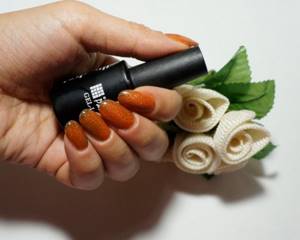
The advantages of gel polish are as follows:
- The nail plate is not clogged.
- Durable, so manicures can be done less often.
- Safe varnish can be used after 12 weeks of pregnancy.
But there are also negative points, which are as follows:
- The work uses solvents that emit unsafe fumes.
- Any coating cannot be done before 12 weeks.
- Due to hormonal fluctuations, the service life of the coating may differ from the declared one, and sometimes peel off and crack.
Important! Any manicure must be done carefully, because some of the vitamins are washed out of the nails under the influence of hormones. Nails become soft and brittle.
And in the salons there are stones
Still, it is better to go to a beauty salon, especially in the last months of pregnancy. At least for one simple reason: if there are no problems with manicure, then a large belly will simply interfere with fine manipulations on the toes. You should be alert in the salon. There are pitfalls here. Thus, the mandatory requirement to disinfect instruments is not always observed there. And the introduction of the slightest infection into the body of a pregnant woman is fraught with the most serious consequences, since drug treatment during this period is contraindicated.
“Experienced” mothers who do not deny themselves care in any position are protected by bringing their own, reliably processed tools to the beauty salon. Moreover, they also visit “their own” salons, verified ones. They spare no expense on medications, making sure that, if possible, they do not contain harmful ingredients.
Doctors' recommendations
All experts say that up to 12 weeks (in the early stages of the first trimester) it is better to refrain from manicure, so as not to harm your unborn baby.
In the last weeks of pregnancy, you can apply gel polish to your nails, but only use safe products.
Before the procedure, be sure to familiarize yourself with the contraindications:
- Peeling nails.
- Various infections.
- Allergic reactions.
- Presence of toxicosis.
- There are problems with the respiratory system.
Let's talk about pedicure
Pedicure is a set of measures for caring for the toes . Typically includes polishing, shaping and coloring nails, removing calluses, softening the skin on the feet, foot massage and other procedures.
Types of pedicure:
- Classical.
- Hardware.
- European.
- SPA pedicure.
- Combined. Combines hardware and classic.
Types of pedicure are similar to types of manicure with the same name.
Advice for pregnant women

The final decision remains only with the woman, but it is still important to listen to the recommendations:
- Get your manicure done only in trusted salons. All instruments must be sterilized.
- The air in the office should be fresh and clean, and most importantly, free of pungent odors.
- Protect your hands from ultraviolet radiation. Use sunscreen before going to the salon.
- Cover your nails only with high-quality shellac.
- If you feel unwell, have a headache, or your general condition worsens, then the procedure must be completed.
Instructions for performing pedicures with products of Israeli origin
It is best to get a pedicure in a salon under the supervision of an experienced specialist.
After all, independent procedures can damage the skin of your feet. But if you don’t have time to go to salons and you decide to do everything at home, then you need to know how to do it correctly.
We recommend:
Pedicure color fuchsia: photo of beautiful nails with design
If you decide to use only the brand card, you should not use other means as the result may not be what you expected. To get a pedicure, you need to go through several steps:
- The soles of the feet should be treated with liquid soap and massaged for several minutes.
- Residues of soap must be removed with wet wipes.
- The peeling should be applied to the legs and distributed evenly over the feet. It is not necessary to massage your feet.
- Next, the legs need to be wrapped in cling film. The drug should moisturize the skin well and soften the stratum corneum on the feet. At this point, the feet become very hot and blood flow increases.
- If there are corns and calluses, they also need to be softened. To do this, the drug should be applied to the affected areas of the body using a cotton swab. If your toenails have grown, you should use peeling. The finger on which the nail has grown must be wrapped in plastic and left for at least half an hour.
- After time, the film must be removed and dead skin removed with a scalpel.
- Then you need to treat your feet and apply antifungal drugs.
- At the end of the procedure, the feet are lubricated with a moisturizing and restorative product.
Cosmetics papers have been on the market for a long time and have been proven not to harm pregnant women. But the above steps are suitable for almost any option.
Return to contents
Nail design ideas for the expectant mother
Attention! Any mother wants to look well-groomed and beautiful, especially when it comes to her nails.
When it comes to design, there are many interesting options for pregnant women.
- Classic French manicure using glitter. You can use neat and small rhinestones. Classic always remains in fashion.
- Minimalism, plain. Nails are painted in one shade. The color depends on the client's wishes.
- With drawings and patterns. Very often, preference is given to drawings in the form of a stroller, a baby, etc.
- Ombre, gradient. Visually makes nails longer. It is advisable to use delicate shades.
French manicure with glitter:
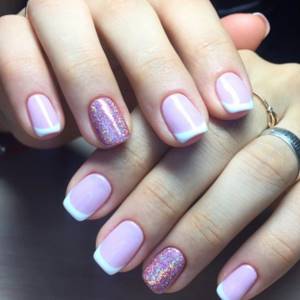
Plain manicure:

Minimalism:

Manicure with drawings:
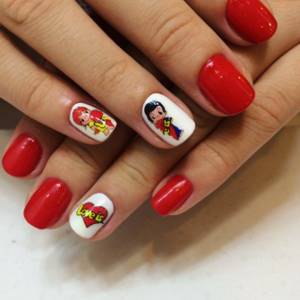
Gradient:
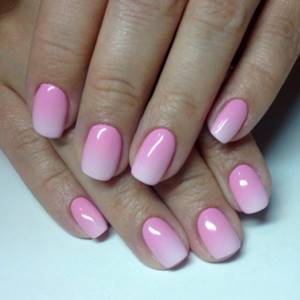
Kart pedicure is a great option for expectant mothers

Today, there are a lot of tools and many different techniques for performing pedicures. However, pregnant women need more delicate and gentle treatment of the skin of their feet and nails. The Israeli company Kart has developed a whole series of cosmetic products that have a beneficial effect on the intensive restoration of metabolism and the slightly acidic environment on the skin surface. Such products help at the first signs of an ingrown toenail, actively cope with fungal diseases and help to carefully remove cracks, calluses and corns.
All cosmetics from the Kart brand contain fruit acids and natural ingredients that provide high-quality and effective care for the skin of the feet and nail plates. Pedicures using high-quality products from the Israeli company Kart can be done both by pregnant women and people suffering from diabetes. A whole range of cosmetic preparations allows you to individually select a course of treatment designed for several sessions. It all depends on the condition of your legs. With a series of Kart cosmetic products, it becomes possible to treat feet of any complexity.
Building up
Nail extensions during pregnancy is a rather sensitive topic. The specialist cannot prohibit doing this procedure, but the client should also be aware of any possible consequences.
The main risk lies in the compositions that are used in the work process:
- Base, top.
- Degreaser.
- Gel polishes.
- Klinser.
- Primer, etc.
Important! Doctors and masters do not recommend doing nail extensions, because acrylic has an aggressive composition. It may cause allergic reactions.
Precautionary measures
It is important that a woman follows simple rules for safe manicure for pregnant women:
- It is worth visiting salons where craftsmen work, who thoroughly disinfect the workplace and sterilize instruments.
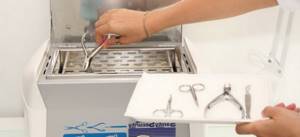
- During seasonal viral diseases, it is advisable for a woman to wear a disposable mask to avoid infection.

Before starting work, the master must remove the closed craft bag with a red indicator. This will indicate that the instruments have been processed at high temperatures. Also, employees must carry out the procedure wearing gloves, pre-treating their hands with an antiseptic.
Useful procedures

A pregnant woman can use various SPA procedures that will have a positive effect on the nail plate. The care is aimed at nourishing, moisturizing and softening the skin of the hands.
Reference. During pregnancy, you can do various massages and use safe cosmetics. You can make warm baths at home.
You should not refuse caring procedures during pregnancy. The main thing is to choose the right material so as not to harm the body and the baby. It is also recommended to consult a specialist.
Shellac and pregnancy
In an effort to make their nails beautiful and with an original design, women often wonder: are shellac and pregnancy compatible? The answer is simple: yes, they are compatible, but subject to all precautions when choosing a specific product and carrying out the procedure.
What is shellac
Shellac is a hybrid of gel and varnish, in other words, ordinary gel polish. The only caveat is that the name “shellac” was invented by the manufacturing company CND and patented this product, being its discoverer.
Materials used
Manicure using shellac is very simple. To carry out the procedure you need to prepare:
- hand bath;
- lint-free wipes for removing excess moisture, removing the dispersion (sticky) layer and degreasing the surface;
- an orange stick or pusher (a special tool for pushing back the cuticle), a manicure trimmer (a tool for trimming the cuticle), a nail file with fine abrasive, a buff (a type of nail file in the shape of a parallelepiped);
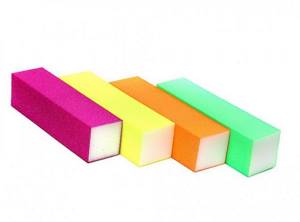
A buff is a special type of file, represented by a three-dimensional parallelepiped, which can be used to process both your own natural and extended nails.
- degreaser, clinser (a product used to better adhere the gel to the nail), emollient oil;
- base coat, shellac, top coat;
- UV lamp 36 Watt (if the lamp is LED, then 18 Watt will be enough).
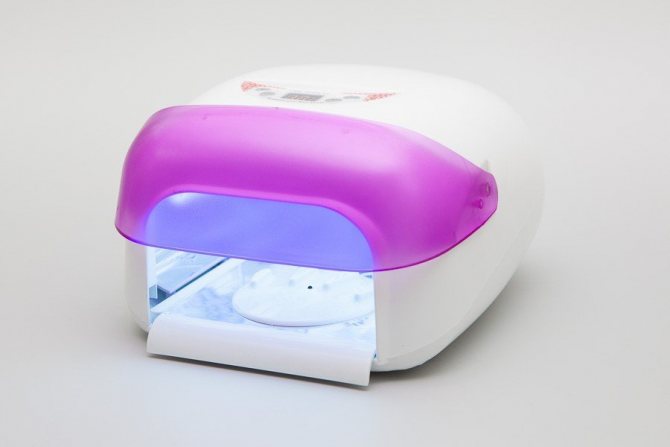
A UV nail lamp uses ultraviolet light to dry various types of manicures.
Stages of the procedure
The shellac application procedure consists of several stages:
- Soften the skin of your hands and fingers with a bath of warm water. Then dry your hands thoroughly, removing all moisture.
- Perform a hygienic manicure: push back the cuticle, carefully remove burrs using nippers or a manicure device, give the nails the desired shape and lightly file the surface with a buff. You shouldn’t get carried away, just give the nail plates a slight roughness.
- Treat the nail plate with a degreaser.
- Apply a base coat and cure in a UV lamp. Drying time depends on the power of the device. There is no need to remove the sticky layer after drying.
- Apply shellac and dry again in the lamp. The polymerization time also depends on the lamp and ranges from 30 seconds to 2 minutes. If necessary, the procedure can be repeated, achieving a deeper and more saturated color. The dispersion layer does not need to be removed.
- Apply top coat, sealing the free edge of the nail. This is the final coating that gives strength to all layers. Dry in a lamp for 30 to 120 seconds. The top can be anything: with a sticky layer (it must be removed after drying) and without it, matte and glossy, with a “cat’s eye” effect.
- Treat cuticles and nail folds with cosmetic oil.
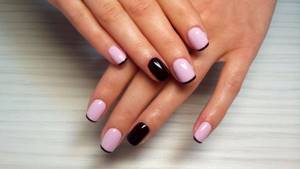
The good thing about shellac is that its service life can be extended even up to 3 weeks with the correct application technique.
Removing shellac is easy:
- A special solvent is applied to the nail plate (it contains acetone, which is the main disadvantage; it can lead to drying of the nail).
- Each nail is wrapped in foil and left for about 7 minutes.
- The remaining shellac is removed with a special stick.
- To apply a new coating, the nail is treated with a buffer.
If a woman's nails become flaky and brittle during pregnancy, then it is better to do the shellac procedure infrequently, since removing the coating can worsen the condition of the nail plate. Care procedures should be strengthened: applying special creams, oils or varnishes to the nails, which will bring the nails back to normal.
Video: how to properly apply and remove shellac
Possible hazards associated with the procedure
This manicure does not pose any super-tasks. It is only important to remember the algorithm for the entire procedure and follow the rules for disinfecting instruments and hands. When causing cuts or scratches, immediately treat the wound with hydrogen peroxide, chlorhexidine digluconate or Miramistin.
This is important to know about electric manicure sets
For every girl who loves herself, her appearance is important. Everyone, without exception, strives for beauty. And one of the most important signs of beauty is grooming. Particular attention should be paid to the condition of the nails and hands. Since there is not always a chance to turn to a professional, girls do most of the procedures at home. Lately, the fair half has increasingly given their preference to hardware manicure. After all, this saves a lot of time and simplifies the task. The main feature of hardware manicure is that there is no need to soften the skin before starting, that is, you don’t have to bother yourself with steaming your hands, baths and other tedious actions. Using this device, you will be able to quickly and painlessly give your nails the desired shape, process the side ridges and remove cuticles. The big advantage of hardware manicure is that it is very easy to use. How to accurately select a device for manicure and how to use it so as not to harm your nails and finger skin will be discussed in our article.
Advantages of using a router
From the above, every girl already understands how useful this thing is in a woman’s home arsenal and how much it saves time, money, and also has a positive effect on morale, because a high-quality manicure in such a short time is the limit of all dreams, which, as it turns out, quite real if you have a manicure machine at hand. Before moving on to how to choose a manicure device, let’s collect all the advantages of a router:
1. To use the milling cutter, there is no need to carry out softening procedures before use, and you do not have to be afraid of injuring dry skin. 2. It can be used on both natural nails and artificial nails. 3. Excellent prevention of burrs. 4. Cleaning the skin and straightening the nail plate. 5. The router is quite easy to use, and special attachments will do most of the work for you, which certainly distinguishes it from using nail files. You just need to follow the operating rules. 6. This tool is quite versatile, because it is suitable not only for manicure, but also for pedicure.
However, the manicure device should be considered individually for each person. After all, it may not be suitable for everyone. So, before purchasing this miracle technique, it makes sense to try out a hardware manicure from a professional. Please pay attention to the skin reaction when using the device; this mainly applies to those with sensitive skin. If you are convinced that the device is suitable for you and you intend to purchase it, it’s time to move on to how to choose a suitable router for yourself.
Is it possible to dry your nails with a lamp?
Gel polish does not harden in air; it polymerizes in an ultraviolet lamp. It is known that ultraviolet radiation is harmful, but it is in the sun's rays. In a manicure lamp, this light is ten times weaker than in the sun on a fine day.
However, there is one danger you should be aware of. During the polymerization of the varnish, a reaction occurs with the release of heat, and in some cases a burning sensation may be felt:
- if the lamp is new;
- if a thick layer of base is applied;
- if the nails are thin and weakened.
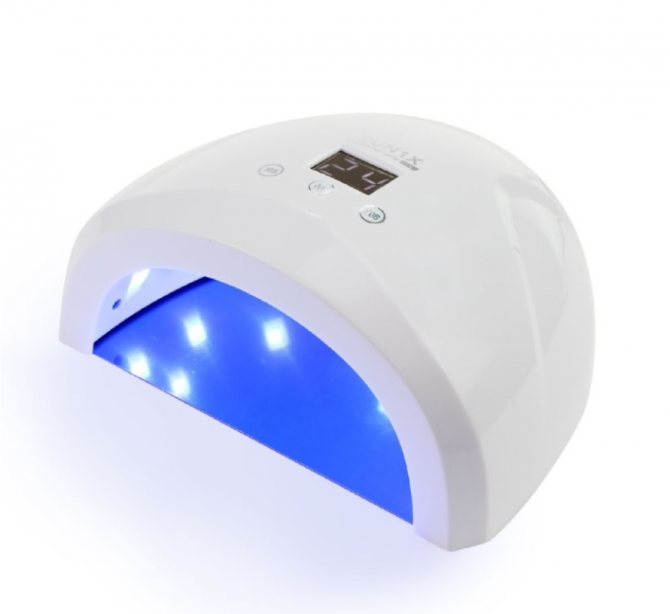
. The feeling of heat is acceptable, but if your finger starts to burn or burn, you must immediately remove your hand from the lamp and let the material cool, otherwise the nail plate may burn. This burn can lead to the formation of a cavity, onycholysis, and the nail moves away from the skin.
This can also happen if you “overuse” the varnish - an overloaded nail with an old coating grows, and in the end it simply “comes off” from the nail bed - you get a “pocket” where bacteria can get into. To get rid of this phenomenon, you will have to remove all the polish, cut the nail short, clean the area and wait until the area has completely grown back - the process can take up to six months.




